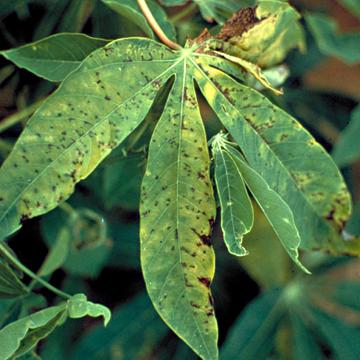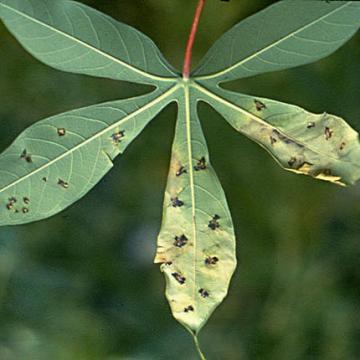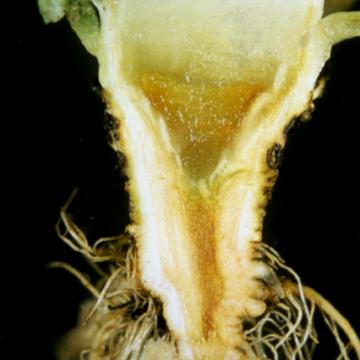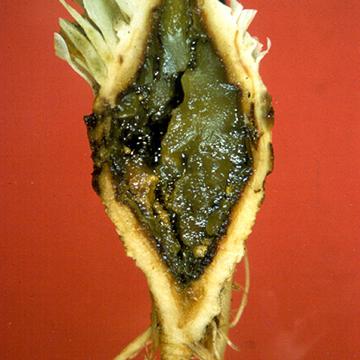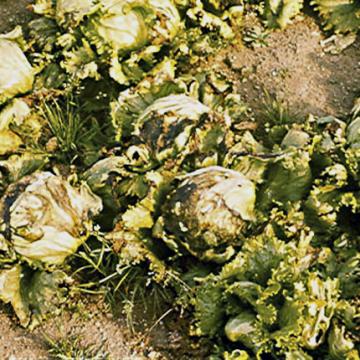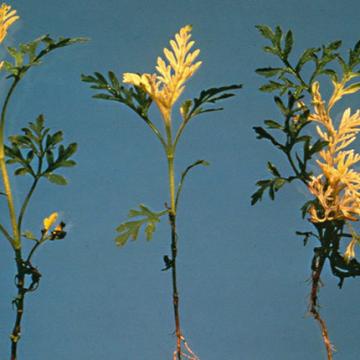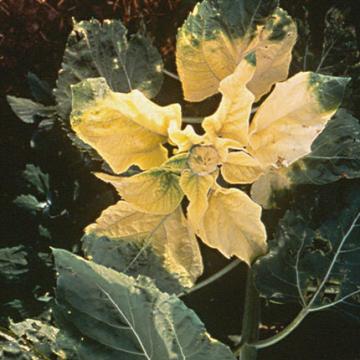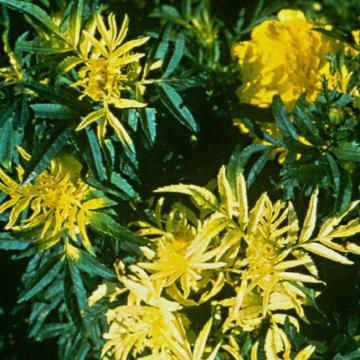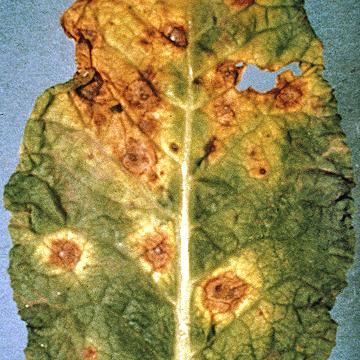DISEASE: Bacterial leaf spot (Bacterial necrosis)
HOST: Cassava
Cassava with yellowish leaves and water-soaked, angular spots. The disease is primarily on foliage, although the pathogen may invade stem buds and young branches.
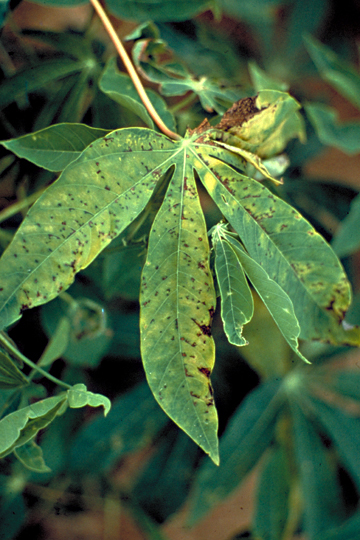
Bacterial leaf spot (Bacterial necrosis) | Cassava
DISEASE: Bacterial leaf spot (Bacterial necrosis)
HOST: Cassava (Manihot esculenta)
PATHOGEN: Xanthomonas cassavae
PATHOGEN SYNONYM: Xanthomonas campestris pv. cassavae
SOURCE: APS
DISEASE: Bacterial leaf spot (Bacterial necrosis)
HOST: Cassava
Cassava with brownish lesions and blackish edges. Leaves turn yellow with multiple infection sites.
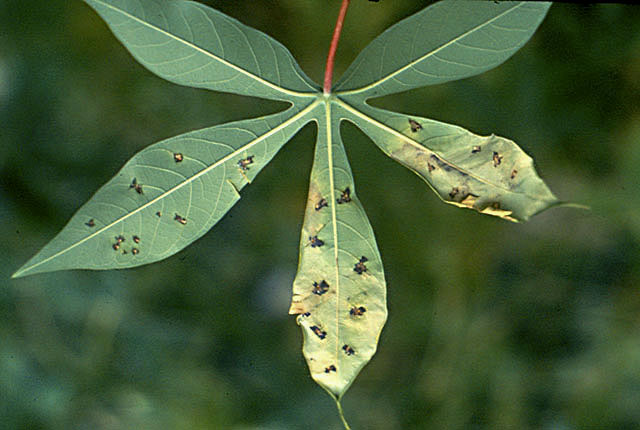
Bacterial leaf spot (Bacterial necrosis) | Cassava
DISEASE: Bacterial leaf spot (Bacterial necrosis)
HOST: Cassava (Manihot esculenta)
PATHOGEN: Xanthomonas cassavae
PATHOGEN SYNONYM: Xanthomonas campestris pv. cassavae
SOURCE: H. Maraite, A. Alvarez
DISEASE: Head rot (Jelly rot)
HOST: Lettuce
Sliced head of lettuce. Typical symptoms are a translucent appearance and browning or jelly rot of the stalk (crown).
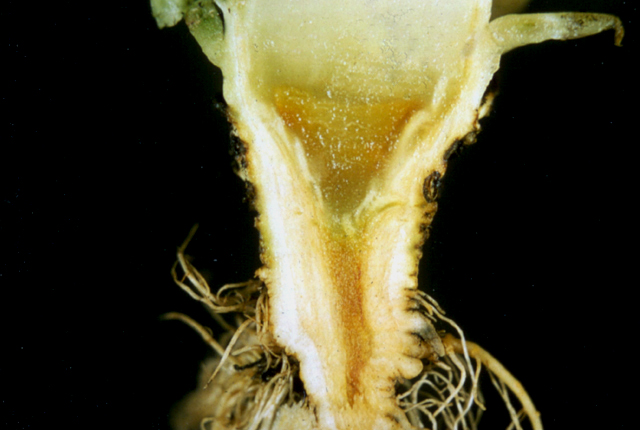
Head rot (Jelly rot) | Lettuce
DISEASE: Head rot (Jelly rot)
HOST: Lettuce (Lactuca sativa)
PATHOGEN: Pectobacterium carotovorum
PATHOGEN SYNONYM: Erwinia carotovora subsp. carotovora
SOURCE: J. Cho, A. Alvarez
DISEASE: Head rot (Jelly rot)
HOST: Lettuce
Advanced stage of lettuce stalk rot (crown).
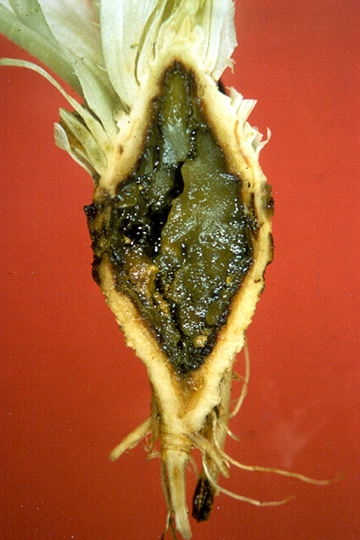
Head rot (Jelly rot) | Lettuce
DISEASE: Head rot (Jelly rot)
HOST: Lettuce (Lactuca sativa)
PATHOGEN: Pectobacterium carotovorum
PATHOGEN SYNONYM: Erwinia carotovora subsp. carotovora
SOURCE: J. Cho, A. Alvarez
DISEASE: Head rot (Jelly rot)
HOST: Lettuce
Head rot of lettuce first appears as rapid wilt of outer wrapper leaves. Wilt is caused by collapse of vascular tissues, which develop a pinkish to brown discoloration.
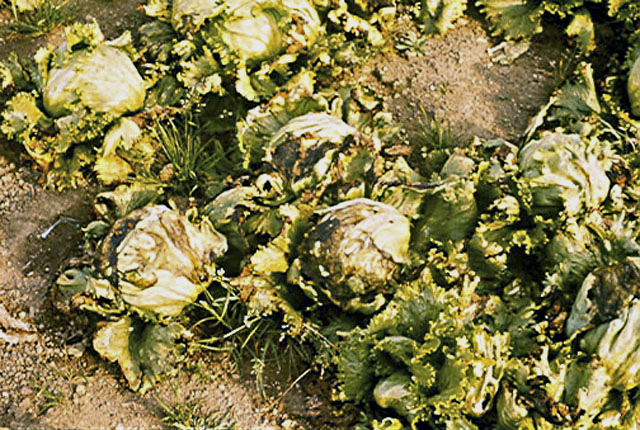
Head rot (Jelly rot) | Lettuce
DISEASE: Head rot (Jelly rot)
HOST: Lettuce (Lactuca sativa)
PATHOGEN: Pectobacterium carotovorum
PATHOGEN SYNONYM: Erwinia carotovora subsp. carotovora
SOURCE: L. Fucikovsky
DISEASE: Pseudomonas leaf spot
HOST: Marigold
Marigolds with yellow apical chlorosis attributed to toxin production by the pathogen.
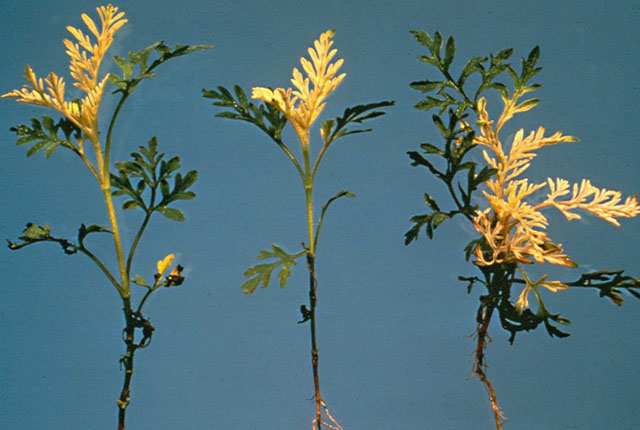
Pseudomonas leaf spot | Marigold
DISEASE: Pseudomonas leaf spot
HOST: Marigold (Tagetes erecta)
PATHOGEN: Pseudomonas syringae pv. tagetis
SOURCE: R. Durbin
DISEASE: Pseudomonas leaf spot
HOST: Marigold
Chlorotic leaves with total loss of chlorophyll. Disease is also known as toxic chlorosis.
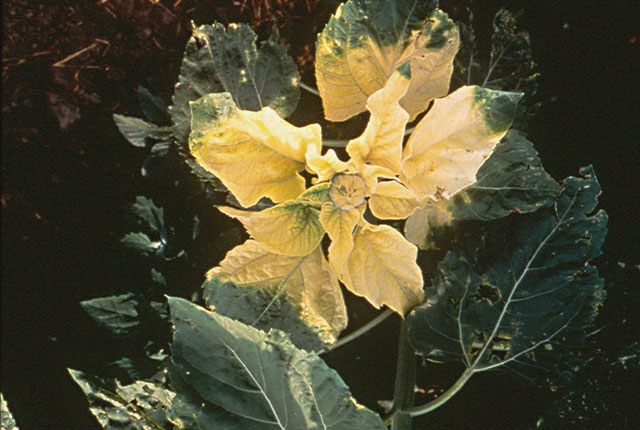
Pseudomonas leaf spot | Marigold
DISEASE: Pseudomonas leaf spot
HOST: Marigold (Tagetes erecta)
PATHOGEN: Pseudomonas syringae pv. tagetis
SOURCE: R. Durbin
DISEASE: Pseudomonas leaf spot
HOST: Marigold
Plants with bright yellow apical chlorosis.
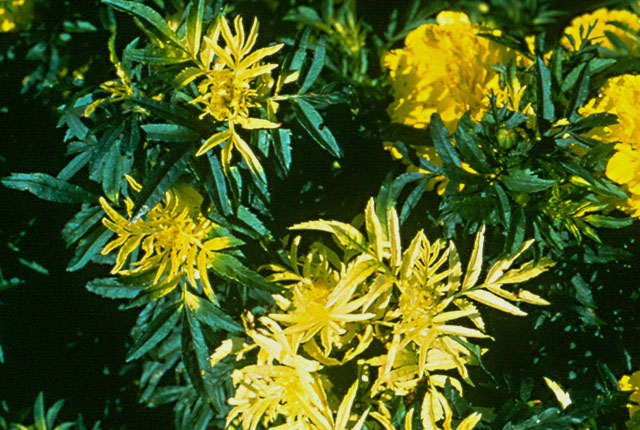
Pseudomonas leaf spot | Marigold
DISEASE: Pseudomonas leaf spot
HOST: Marigold (Tagetes patula)
PATHOGEN: Pseudomonas syringae pv. tagetis
SOURCE: R. Durbin
DISEASE: Pseudomonas leaf spot
HOST: Primrose
Leaf with brownish red spots and reddening of adjacent areas. Disease begins as small, water-soaked lesions that later coalesce into large necrotic spots.
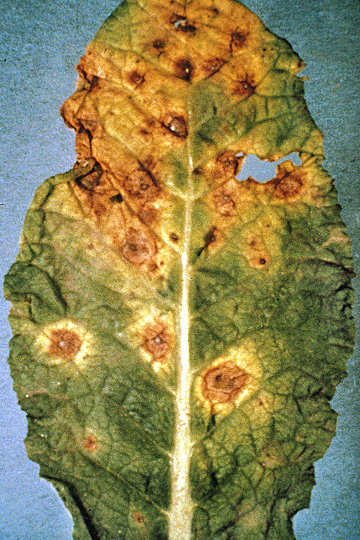
Pseudomonas leaf spot | Primrose
DISEASE: Pseudomonas leaf spot
HOST: Primrose (Primula sp.)
PATHOGEN: Pseudomonas syringae pv. primulae
SOURCE: APS


